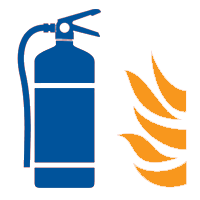Protecting your Methodist church
06 August 2019
Methodist Insurance
Made Simple
To help protect your church, we summarise below some of the things you can do and provide details of where to get more information.
Bad weather
You can’t change the weather, but good building maintenance can help to minimise the damage storms can cause.
Storm damage
Here are some of the things you can do:
- Stay alert, sign up for severe weather warnings
- Maintain trees properly based on regular tree surveys by a suitably competent contractor
- Secure doors and any loose objects to prevent problems in high winds.
Flood
 It’s almost impossible to flood-proof your church properties completely, but there are some simple actions you can take to reduce the damage a flood may cause:
It’s almost impossible to flood-proof your church properties completely, but there are some simple actions you can take to reduce the damage a flood may cause:
- Put together a flood plan to make your church more resilient and reduce the impact of water entering the building
- Find out if you’re at risk of flooding, the Environment Agency (EA – England and Wales) and Scottish Environment Protection Agency (SEPA) offer an online postcode search to see if your local area is at risk
- Form barriers against flood water getting into your church or other properties such as using flood barriers/defences or sandbags
- Move valuable or delicate items upstairs or to a safer location.
Lightning
With up to one billion volts of electricity in a single bolt1, lightning has the power to destroy masonry, start fires and burn out electrical systems.
Tall buildings, such as churches, can attract lightning and a
well-maintained lightning conductor is a strong defence. This should be checked regularly by a lightning engineer.
Theft of metal
Metal theft remains a serious issue. To reduce the chance of metal theft happening at your church:
- Contact your local Crime Reduction Officer to visit you and give advice
- Restrict vehicular access using gates or security bollards
- Ask neighbours to report any suspicious activity to the police.
To help protect churches, we make it a condition of your theft of metal cover to apply SmartWater or an alternative forensic marking system which has been approved by us. Remember you need to:
- Apply the forensic marker
- Register your kit
- Display your warning signage prominently.
Fire safety
 Fire can happen for a number of reasons including faulty electrical wiring, heating systems and risks caused when repairs and restorations take place. Here are some precautions you can take to reduce the chance of a fire:
Fire can happen for a number of reasons including faulty electrical wiring, heating systems and risks caused when repairs and restorations take place. Here are some precautions you can take to reduce the chance of a fire:
- Carry out a fire risk assessment
- Always use candles safely
- Check fire extinguishers are suitable and regularly serviced and ensure people are trained in its use
- Make sure there are evacuation procedures in place.
Electrical wiring
Numerous church fires can be attributed to faulty electric wiring or apparatus. A programme of regular inspection, testing and maintenance of the following electrical systems should be in place in order to prevent danger:
- Wiring
- Switchgear
- Any fixed machinery
- Portable electrical appliances.
Electrical wiring needs to be inspected, tested and updated to ensure it is safe every five years. Only electrical contractors with full scope registration or membership to work on commercial installations with:
- The National Inspection Council for Electrical Installation Contracting (NICEIC)
- The Electrical Contractors’ Association (ECA) or
- The National Association of Professional Inspectors and Testers (NAPIT) should be employed.
Church security
A sound knowledge of security measures can help to minimise loss.
Theft
The following can help minimise the risk of theft from your church:
- Make sure you lock the church building when it is not in use
- Remove valuables from sight when the church is open
- Fit strong locks, intruder alarms and good external lighting
- Security mark valuable items.
Malicious damage
Malicious damage is basically vandalism. Attacks are usually opportunist in nature and churches are particularly vulnerable whilst unoccupied. The following security measures should be introduced to reduce the opportunity for attack:
- Maintain any existing perimeter walls and railings
- Consider introducing security lighting
- Ensure doors to church buildings are secured
- Restrict vehicular access using gates or security bollards
- Secure outbuildings which may contain valuable tools/equipment.
If intruders manage to gain entry to the building, an
effective intruder alarm system will raise an alert and help mitigate damage and theft losses from inside the church.
Slips, trips and falls
Many accidents can be prevented by implementing the following:
- Fix down the edges of carpets, rugs and doormats or using an edge strip
- Sweep up leaves and remove snow and ice on footpaths
- Display warning signs where appropriate.
We have produced
slips and trips guidance which highlights some of the most common hazards and suggesting measures to put in place which could reduce or eliminate the risk altogether.

 It’s almost impossible to
It’s almost impossible to  Fire can happen for a number of reasons including faulty electrical wiring,
Fire can happen for a number of reasons including faulty electrical wiring, 
